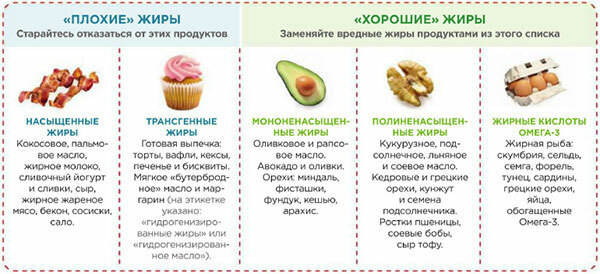Diet for poisoning in children: how to feed the child, sample menu
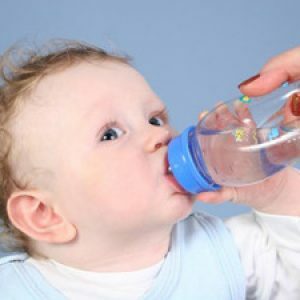 Unfortunately, most parents face the problem of childhood food poisoning sooner or later.It is worth noting that the likelihood of this disease significantly increases in the warm season, when different microbes and bacteria get an excellent soil for successful reproduction, including in food.
Unfortunately, most parents face the problem of childhood food poisoning sooner or later.It is worth noting that the likelihood of this disease significantly increases in the warm season, when different microbes and bacteria get an excellent soil for successful reproduction, including in food.
General information on child poisoning
Food poisoning is a serious consequence of the ingress of pathogens and toxins produced by them. The most common childhood poisoning is caused by bacteria such as:
- salmonella;
- staphylococci;
- streptococci;
- enterococcus, etc.
Often, chemical substances( nitrates, pesticides) that are introduced into the body in large quantities with vegetables and fruits also cause the poisoning of the child.
The presence of at least one of the following symptoms may indicate possible poisoning:
-
 nausea and vomiting;
nausea and vomiting; - is a debilitating diarrhea;
- pain in the abdomen;
- high temperature;Lethargy or hyperexcitability
- .
The main danger of poisoning for children is the intoxication of the body, which can trigger serious complications, in particular:
- Pancreatic dysfunction.
- Pancreatitis.
- Colitis.
- Gastritis.
This is why it is very important to immediately provide the patient with the first aid they need( usually gastric lavage) and seek medical help. An important component of treatment for food poisoning in a child is a strict diet, the observance of which helps to restore the normal functioning of its digestive system.Unfortunately, the recovery process in children occurs somewhat longer than in adults.
The main features of feeding children with poisoning
When poisoning in the children's gastrointestinal tract( GIT) there are processes that often provoke the development of chronic inflammation of the digestive system.The normal operation of the liver and pancreas is disrupted. To help the child's body cope with the difficult condition and restore the digestive process, it is very important to consider the following features of the diet in childhood poisoning.
- It is necessary to reduce the load on the digestive tract as much as possible:
-
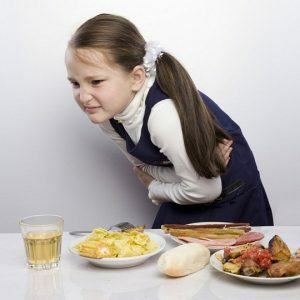 can not force the child to eat, and even more to finish eating, if he refuses;
can not force the child to eat, and even more to finish eating, if he refuses; - to offer food should be often, but in a minimal amount - a fractional food;
- , the break between meals should be 2-2.5 hours;
- food can be either liquid or semi-liquid;
- the food should be warm;
- as part of the food should completely not be aggressive components for the mucous toddler.
-
- The menu should provide the child with a rational amount of proteins, carbohydrates and fats:
- , proteins must be supplied in sufficient quantities.The best source of protein for poisoning are dairy products, which are fairly easy to digest;
- fat should be consumed 10-20% less than normal, because when poisoning the child's digestive system produces a reduced amount of enzymes necessary for their digestion.It is best to add fats to ready-made meals( for example, in cereals);
- carbohydrates should be offered to the child in moderate amounts, as their overabundance can intensify the processes of fermentation in the intestines, which will adversely affect the baby's condition.
- To unload the gastrointestinal tract and allow it to recover quickly, the principle of separate nutrition will help.That is the first time it is desirable not to offer the baby in one meal the foods with a high concentration of carbohydrates and proteins.
- With the food the child should receive all the vitamins and minerals necessary for him.In addition, after the end of the acute period, the supplementary intake of the vitamin and mineral complex will help the baby to replenish the volume of missing micronutrients.
Prohibited products for poisoning and during the recovery period of the body
When food poisoning, the child's diet significantly changes: the menu should exclude most of the products to which he is accustomed and eagerly eats. So, when poisoning children can not be offered: various vegetables, fruit or berries in raw, thermally unprocessed form;
- ;
-
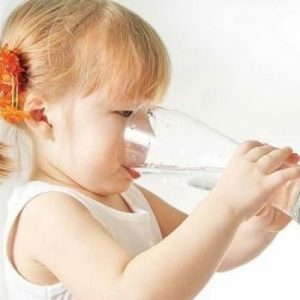 cereals containing gluten-millet, barley, barley;
cereals containing gluten-millet, barley, barley; - products of the legume family - beans, peas, lentils, asparagus, etc.;
- meat of fatty varieties;
- pasta;
- refractory animal fats( fat);
- canned and smoked;
- sausages;
- bakery and other flour products;
- any juices;
- any sweets, including chocolate and sweets.Of course, there can be no question of giving the child different kinds of food of a harmful nature, such as: soda, chewing gum, chips, fast food, semi-finished products and so on.
Authorized products for child poisoning
Of course, for breastfed babies up to a year the best nutrition is breast milk.If the baby is already on the lure, then for a period of acute condition it is stopped, and then gradually begin to enter small doses of dietary nutrition.
For poisoning, a child who follows a diet can consume the following food:
-
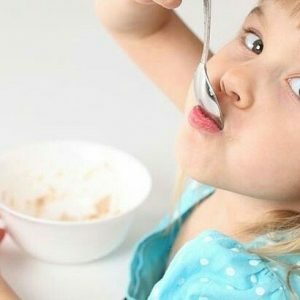 thermally processed vegetables: beets, carrots, cauliflower, broccoli, tomatoes. Important! Potatoes can be introduced into the baby's diet, but only gradually, as it is a source of complex carbohydrates.Cabbage, cucumbers and radish and other vegetables containing coarse fiber are not allowed.
thermally processed vegetables: beets, carrots, cauliflower, broccoli, tomatoes. Important! Potatoes can be introduced into the baby's diet, but only gradually, as it is a source of complex carbohydrates.Cabbage, cucumbers and radish and other vegetables containing coarse fiber are not allowed. - fruit: baked apples, bananas;
- dried fruits: prunes, dried apricots, etc.;
- cereals: buckwheat, rice, oats;
- meat of low-fat varieties( for example, chicken or rabbit) in reduced quantities and better in the form of a meat souffle;
- fish.It is better to give preference to sea fish varieties;
- eggs: half of the chicken egg yolk per day is allowed;
- Wheat bread can be given in dried form.Also crackers and biscuits like crackers are allowed;
- drinks: dried fruits' nuts, rich in vitamins and minerals, as well as fruit jelly, light black and green tea with added sugar or honey, herbal teas( rose hips, lemon balm, raspberry and currant leaves);
- sour-milk food: yoghurt, yogurt, cottage cheese( introduced gradually).Whole cow milk should be excluded from the diet;
- fats of vegetable and animal origin are administered in small doses as an additive to dishes( for example, to porridges).In this case, butter is best used in a melted form;
The diet does not prohibit the offering of baby food for industrial poisoning - canned vegetable puree and meat soufflé.However, everything should be in moderation, because fresh, "live" food can not replace jars.
Drinking regimen for children with poisoning
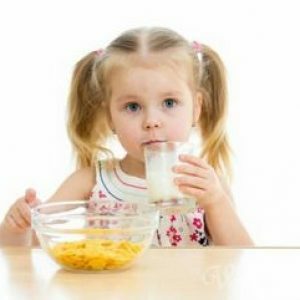 Symptoms of poisoning such as vomiting, diarrhea, and high fever inevitably lead to dehydration and a violation of the acid-base balance in the child's body, resulting in a thickening of blood and an increase in the effect of harmfulAnd toxic substances .Therefore, when poisoning, the primary task of parents is to ensure an adequate drinking regime for the child.
Symptoms of poisoning such as vomiting, diarrhea, and high fever inevitably lead to dehydration and a violation of the acid-base balance in the child's body, resulting in a thickening of blood and an increase in the effect of harmfulAnd toxic substances .Therefore, when poisoning, the primary task of parents is to ensure an adequate drinking regime for the child.In the acute period - with severe vomiting and debilitating diarrhea, the best assistants for oral rehydration of the child are special water-salt solutions, which usually contain salt, soda, glucose and potassium .The basis for the preparation of these solutions is sold in the pharmacy in the form of a powder( for example, Regidron).The instructions for powdered rehydrates usually indicate how much warm boiled water should dissolve the contents of the packet( 1 liter or 0.5 liters).
During a day the child should receive the amount of fluid shown to him, which is calculated taking into account the body weight and age of the patient. So, for each kilogram of weight within 24 hours the child should drink:
- for 1 year - 150-200 ml of solution;
- from 1 year - 120-170 ml of the solution.
To ensure that the drink does not provoke repeated emetic reflexes, the calculated volume of the liquid should be offered to the child 1-2 teaspoons every 10-15 minutes.During the acute period of the illness, all drinking should be warm or at room temperature.At the same time, water-salt solutions can be alternated with such drinks as sweet, weak tea, herbal decoctions.
Rehydration of the child is carried out until complete cessation and vomiting, and diarrhea. However, it should be understood that even after the completion of an acute period the patient continues to need a plentiful drink.
Nutritional regimen and food preparation features for child poisoning
As mentioned above, meals for a child's diet should be frequent( 5-6 times per day every 2-2.5 hours), however, portions of food mayBe the minimum .Do not worry, if at first your baby will eat very little or at all refuse to eat.In no case can not insist, much less try to feed the child against his will.As a rule, a normal appetite wakes up in children who suffered from poisoning, 3-5 days after the end of vomiting and diarrhea.
Some recommendations on the feeding regime of a child during poisoning and during its recovery:
-
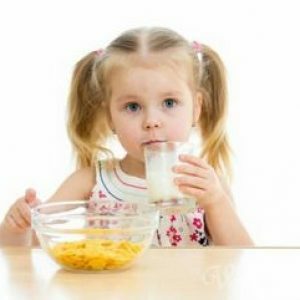 On the first day of illness the body directs all its efforts to purification from toxins, so even if the child is not against eating, the amount of products offered to him should decrease to the maximum. It is better to concentrate all your attention on providing the child with a plentiful drink in the form of herbal decoctions, water, weak tea, and, if necessary, water-salt solutions.
On the first day of illness the body directs all its efforts to purification from toxins, so even if the child is not against eating, the amount of products offered to him should decrease to the maximum. It is better to concentrate all your attention on providing the child with a plentiful drink in the form of herbal decoctions, water, weak tea, and, if necessary, water-salt solutions. - On the second day, if the child's condition has stabilized a little, and vomiting and nausea have stopped, you can offer the patient buckwheat porridge with a soft boiling consistency, or rice well-boiled porridge, which is known for its fixing effect. From the category of "for tea" the child is allowed to crackers from white bread.
- From the next day in the baby's menu you can gradually include sour-milk products that favorably affect the intestinal microflora, light vegetable soups, boiled lean meat and other non-forbidden foods.All this, of course, is allowed to eat a child if the acute period is already over.
- The return to the normal infant nutrition regime usually occurs within two weeks.
Recommendations for the preparation of dietary food for the child
For poisoning and during the recovery period, it is desirable for the child to offer only thermally processed products in liquid and semi-liquid form. To grind food, you can use a blender or a sieve to grind it.The usual type of food can be returned after the restoration of the digestive process.
Dietary dishes can be prepared in the following ways :
- cook;
- to stew;
- bake;
- to prepare for a pair.
It is absolutely forbidden during the diet to offer the child fried foods and products cooked on the grill. Also, canned food, pickles, sauces and marinades, spices, dyes should also be excluded from the children's diet, as this all irritably affects the gastrointestinal mucosa and negatively affects the liver of the baby.
Features of preparation of individual dishes:
- Porridge: should be prepared to a liquid boiling point on water diluted in water in a ratio of 1: 1.It is better to give preference to rice and liquid oatmeal, as they contribute to digestion.
- Soups: You can cook vegetarian vegetable soups or soups on meat low-fat broth.Greens may be added, but in slightly less than usual quantities.
- Meat and fish: at first it is recommended to offer the child in the form of a souffle.
Recipe for meat souffle
Ingredients:
- lean meat - 60 g;
- white bread - 5 g;
- the egg is one quarter;
- butter - 0.5 tsp;
- skim broth - 1-2 tbsp.L.
Preparation:
- Finely chopped lean meat is cut into small pieces.We throw it to stew to half-finished state in a frying pan, and there we add a little water.Bread is soaked in cold water.
- Stew and softened bread twice through a meat grinder.Add the egg and broth to the mixture and mix thoroughly.
- The received weight we put out the form for a baking, preliminary greased with oil and sprinkled with crackers.The form is tightly closed with foil.
- We put in the oven on the "water bath", which will ensure a uniform roasting of the souffle, for about 20-25 minutes.
Larisa Tokareva, pediatrician
-



